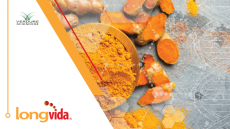Paper lays out methods for ensuring quality of botanical supplements marketed for immune health

The need for more quality control information in this sector is great, as hordes of new immune health products flooded the market during the pandemic, some of which were of substandard quality. Those products were also in some cases brought forward by individuals new to the industry, who might be suspected of having an insufficient grounding in quality control procedures.
The new paper was published in the journal Critical Reviews in Food Science and Nutrition. It was the work of a group of experts from Eurofins and the Council for Responsible Nutrition as well universities and medical schools in Virginia, Wisconsin, Taiwan and Russia.
Titled Label compliance for ingredient verification: regulations, approaches, and trends for testing botanical products marketed for “immune health” in the United States, the review begins with an overview of the regulation of dietary supplements and dietary ingredients in the US. This includes a discussion of the requirement that the analytical testing of such ingredients must be fit for purpose and that companies must have scientifically valid reasons for their testing approaches.
Exactly how that testing is done is left to the individual ingredient suppliers and finished goods manufacturers. Specifying which tests should be done and how while also keeping up with new methods development would be unfeasible in a regulation that must cover thousands of potential ingredients.
Focus on three top selling categories
The paper then lays out something between a primer and a detailed handbook for testing approaches for three top selling categories of ingredients. Elderberry and mushroom ingredients saw big sales spikes during the pandemic, and turmeric ingredients have occupied a top rung in the sales listings for years.
The authors noted there is a wealth of information available on the testing of turmeric ingredients and possible adulterants. This is true, too, but to a lesser degree for elderberry.
However, they noted that the same cannot be said for functional mushroom ingredients. “The standardization of mushrooms’ quality control testing methodologies has been a glaring problem in the industry for decades,” they noted.
Big takeaway: Orthogonal approach yields best results
The papers’s authors note that a multi modal approach yields the best results in botanical ingredient testing. This can include microscopy and DNA tests as well as multiple modes of chemical analysis combined with organoleptic testing.
“It should be emphasized that adulteration testing is quite onerous, and no individual technique can address all potential adulterants; thus, an orthogonal approach (apply multiple methods for testing) can sometimes achieve a more accurate analytical outcome. Similar to adulteration testing, two or more identification approaches are sometimes combined to overcome spoofs that a single methodology cannot confidently detect,” they concluded.
Stefan Gafner, PhD, director of the Botanical Adulterants Prevention Program (BAPP), said the paper is a valuable addition to quality control conversation. Gafner is also the chief science officer of the American Botanical Council (ABC is lead partner of BAPP, which is also supported by the American Herbal Pharmacopoeia and the National Center for Natural Products Research at the University of Mississippi).
“I certainly applaud the efforts by this group of scientists to bring attention to the importance of quality control for botanical dietary supplement ingredients,” Gafner told NutraIngredients-USA.
Mushroom testing continues to be problem
Gafner agreed with the authors that the testing of medicinal mushrooms has a long way to go before it approaches the comprehensiveness available for either turmeric or elderberry.
“While analytical methods for elderberry and turmeric root, and extracts thereof abound and have been available in official monographs, e.g., the USP, or AOAC International, the situation in the mushroom category is quite different. I agree with the authors’ assessment that this has been a glaring problem,” Gafner said.
“One of the issues is that the purported actives are usually large polysaccharides, e.g., beta-glucans, which — in addition to being challenging to analyze — occur in many mushrooms and hence are not suitable for the determination of authenticity. The review lists a few of the pertinent papers in the area of mushroom analysis, but rightfully points out that much more needs to be done in that particular area,” he added.
Valuable Design of Experiments discussion
Gafner also said the paper’s discussion of the issue of sample preparation is especially valuable. He said a lot of scientific literature is devoted to the best ways to analyze samples, with not nearly enough effort devoted toward looking at the best ways to get those samples in the first place. Both aspects have to work in tandem to have a truly functional testing regime, he said.
“For optimization of sample preparation, the use of data from a design of experiments (DoE) can really make a big difference, and I am glad that this topic was discussed in some detail by the authors. Using a DoE usually means that a company has to have an expert in statistics, but it’s certainly worth considering such an approach, which has applicability far beyond sample preparation,” Gafner said.
“We have used a DoE on a few instances to improve product formulations during my time in the industry, and it is really a big time saver if one can assess several parameters (e.g., the impact of several ingredients on a particular aspect such as taste) at once rather than tackling it by modifying one parameter after another individually,” he concluded.
Source: Critical Reviews in Food Science and Nutrition.
doi.org/10.1080/10408398.2022.2124230
Label compliance for ingredient verification: regulations, approaches, and trends for testing botanical products marketed for “immune health” in the United States
Authors: You H, et al.
















